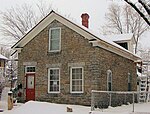College of Visual Arts

The College of Visual Arts (CVA) in Saint Paul, Minnesota, United States, was a private, accredited, four-year college of art and design offering a Bachelor of Fine Arts degree in fine arts, graphic design, illustration, and photography. The fine arts degree offered concentrations in drawing, painting, printmaking, and sculpture. CVA began as one of the first learning environments in the Twin Cities specifically designed to ignite the creativity of artists and designers. CVA was one of a handful of art and design colleges in the U.S. that provided an arts education steeped in the liberal arts. With an enrollment of approximately 200 students and a faculty of 50, CVA offered a low student-teacher ratio. The college was one of only two private art and design colleges in Minnesota. The college announced in January 2013 that its doors would be closing forever effective in June. President Ann Ledy resigned on January 23, 2013, and Dr. Susan Short served as Acting President until the college closed on June 30, 2013.
Excerpt from the Wikipedia article College of Visual Arts (License: CC BY-SA 3.0, Authors, Images).College of Visual Arts
Summit Avenue, Saint Paul Summit - University
Geographical coordinates (GPS) Address Nearby Places Show on map
Geographical coordinates (GPS)
| Latitude | Longitude |
|---|---|
| N 44.942777777778 ° | E -93.113611111111 ° |
Address
Summit Avenue 344
55102 Saint Paul, Summit - University
Minnesota, United States
Open on Google Maps







